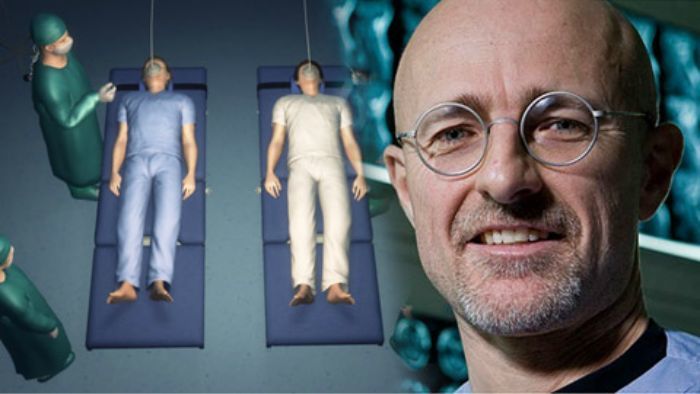Taking a leaf out of Mary Shelley’s Frankenstein, two surgeons are going to perform the first human head transplant, a news that is creating ripples in the medical science world and Gothic literature circles.
Since 1960’s when the first human heart transplant took place, medical science has grown further opening a wide range for researchers to experiment.
Now, two surgeons Xiaoping Ren and Sergio Canavero will perform world’s first head transplant on Valery Spiridonov, 31, a Russian tech geek who suffers from Werdnig-Hoffmann disease—a fatal genetic disorder.
Xiaoping Ren, 55, who was on team that performed the first successful hand transplant, will team up with Italian neurosurgeon Sergio Canavero for the complicated surgery.
The Chinese surgeon has practiced transplant by switching pigs’ forelegs. The surgeon has a bronzed pig ear in his office that the transplant team sent him as a trophy.
While Canavero, 51, who compares himself to Dr. Frankenstein, has already announced his plans to perform first human head transplant surgery in 2017.
The surgery which is referred to as “junk science” by many scientists is likely to be conducted in China as European countries will not permit such experiment.
In the September edition of The Atlantic profiles, Canavero has given a detailed description of how the surgery will take place. Canavero has tested the transplant successfully on mice.
Like in any other organ transplants, the procedure will include finding a suitable young brain-dead male donor for the transplant.
Once granted permission by the donor’s family the body will be set up for “surgical decapitation” which will require a team of 80 surgeons.
Canavero said that Spiridonov’s body will be kept at the temperature of 50 degrees Fahrenheit to cool down which will delay tissue death in the brain for about an hour. The surgeons will use a transparent diamond blade to remove heads from the body and a custom-made crane would be used to shift Spiridonov’s head to the donor’s body. The head will be fused with the donor’s body with the help of a chemical called polyethylene glycol (PEG) to promote re-growth of cells in the spinal cord.
He further illustrated that after the surgery the patient will be kept in a coma for three to four weeks so that the body gets enough time to heal. Implanted electrodes will be used to strengthen new nerve connections with donor’s body.
Spiridonov, who has agreed for the treatment said, “Removing all the sick parts but the head would do a great job in my case,” Spiridonov told the magazine. “I couldn’t see any other way to treat myself.”
Canavero’s findings have been published in several papers and journal of Surgical Neurology International.
Still the scientists remain divided on the idea of head transplant as it may result into the patient’s death and aftermath effects.
Two Italian scientists Anto Cartolovni and Antonio Spagnolo, wrote a letter to Surgical Neurology International stating: “Despite his (Canavero’s) vision, modern cognitive science shows that our cognition is an embodied cognition, in which the body is a real part in the formation of human self.”
They further elaborated, “Therefore, the person will encounter huge difficulties to incorporate the new body in its already existing body schema and body image that would have strong implications on human identity.”
Soon, that favourite scene in a sci fi film might become reality as the world watches with bated breath, the marvels if medical science.


















